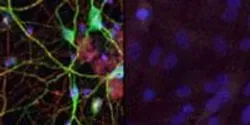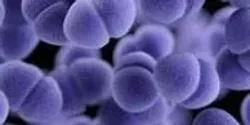Cell & Molecular Biology

Problem: The human genome encodes thousands of secreted proteins, each of which is an actor in
the delicate biochemical balance of diagnostics. Even a slight change in any one of these proteins can
mean the difference between sickness and health. Such a change also provides a critical window into
the body and helps to direct diagnosis and treatment, however, the vast majority of secreted proteins
are present in concentrations well below what conventional technologies can measure, and their role in
human health is poorly understood.

Collaborating scientists from The Scripps Research Institute (TSRI) and the University of California (UC) San Diego have developed a powerful new system for studying how proteins and other biological molecules form and lose their natural folded structures.

Problem: At the crossroads of understanding cell physiology, disease pathology and etiology lies cell metabolism, encompassing the cellular set of life-sustaining chemical transformations. Dysregulation of cell metabolism is now known to be a common component of cancer, immunology, obesity, diabetes, and neurodegenerative disease. This is because mitochondrial respiration and glycolysis are the major sources of life-sustaining and biosynthetic processes for the cell, specifically energy in the form of ATP (adenosine triphosphate) and macromolecules such as membranes, nucleotides, transporters, organelles, etc. Metabolic pathways are increasingly considered as potential therapeutic targets. Therefore, the ability to measure and understand cellular bioenergetics can provide valuable insight into disease and contribute to the potential identification of drug discovery targets.

Scientists have described a way to convert human skin cells directly into a specific type of brain cell affected by Huntington’s disease, an ultimately fatal neurodegenerative disorder. Unlike other techniques that turn one cell type into another, this new process does not pass through a stem cell phase, avoiding the production of multiple cell types, the study’s authors report.

Problem: The assessment of cell concentration and viability is an important step in the characterization of cell health. This information can be used for monitoring proliferation rates, optimizing growth conditions and normalizing cell data for further studies, such as assessing the impacts of cytotoxic compounds.
Current methods rely on multiple, sometimes complex, instrument platforms to provide these answers, reducing flexibility and increasing research costs. Other, simpler methods provide inconsistent results due to their dependence on single-uptake dyes, which do not effectively discriminate between the various states of cell demise. As a result, there is a crucial need for analytical methods that efficiently provide reproducible count and viability data.















